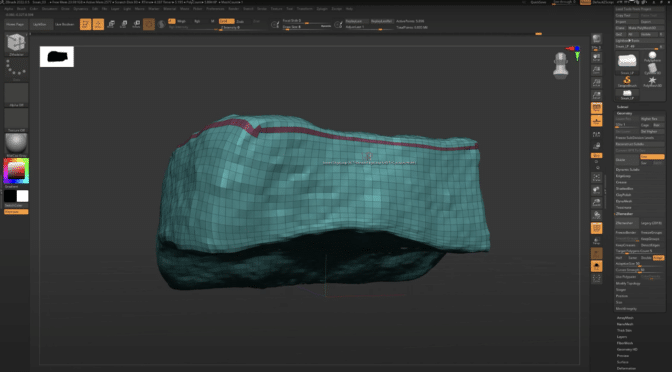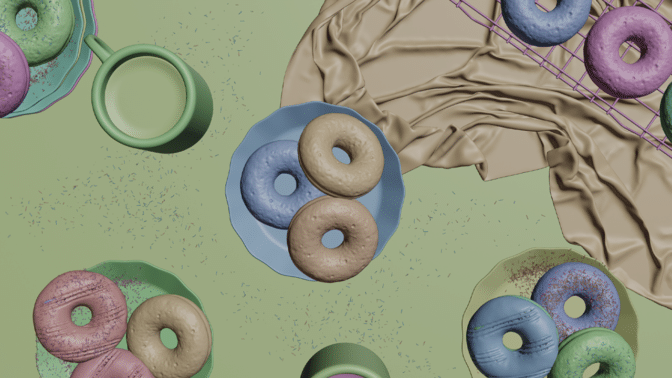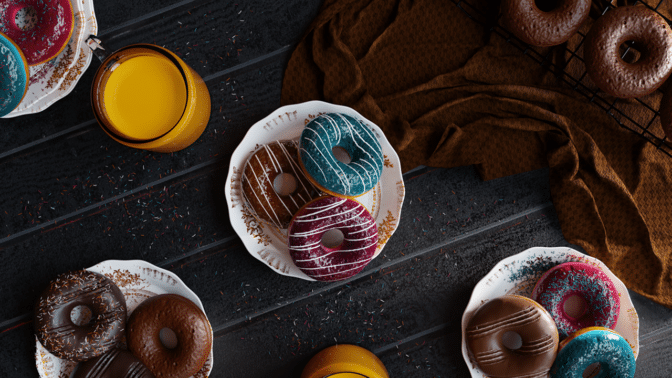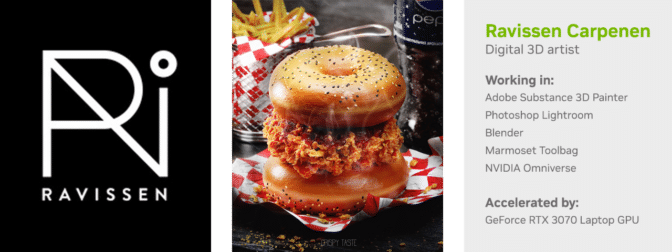Editor’s note: This post is part of our weekly In the NVIDIA Studio series, which celebrates featured artists, offers creative tips and tricks, and demonstrates how NVIDIA Studio technology improves creative workflows.
It’s the season of gratitude: that time of year to give thanks for the people and small moments that make life so special.
This week’s featured In the NVIDIA Studio artist, Ravissen Carpenen, is serving up a feast of mouthwateringly photorealistic 3D food renders to the dinner table.
His delectable time-lapse videos are featured on his YouTube channel, CG Realism — presented with a side of upbeat music and a pinch of style.
Carpenen was one of several contributors to the food-themed Studio Standout video contest, alongside Roger Roque (@rogerroqueid), Nicole Morena (@nicky.blender), Heloise Cart (@isoheell) and Kris Theroin (@kristheorin).
Finally, livestreamers using OBS Studio — a free, open-source software for video recording and livestreaming — can download the latest update with HDR10 capture support, WHIP and WebRTC output and more. Learn more details.
All About That Baste
Carpenen’s wife, a pastry chef, inspired his photorealistic, food-centered works.
“My aim, one day, is to be able to create ultra-realistic renders that will be used in film and movies,” he said.
His projects begin with online research and reference gathering, mainly on Pinterest and Behance, which he then compiles into mood boards using the stand-alone image tracking program PureRef.
Before any modeling takes place, Carpenen lights the scene — but without textures.
“This is to tell the story of the artwork, as light intends to give artwork an emotional flow, alongside as well as color and materials,” he said.
Carpenen initially sculpts his models in ZBrush using customizable brushes to shape, texture and paint his virtual clay in a real-time environment with instant feedback.
He then browses the Quixel Megascans library for models that can further add realism, such as garlic cloves and rosemary garnishes for his turkey project.
Rare-in for More
Carpenen uses Marmoset Toolbag’s ambient occlusion, curvature, normal and thickness features to bake the ZBrush meshes from high-poly to low-poly models as 32-bit textures.
The process saves memory space, minimizing lag time while allowing greater flexibility in the modeling stage.

Carpenen’s GeForce RTX 3070 GPU-powered system with RTX acceleration instantly optimized his meshes. RTX-accelerated ray tracing and OptiX AI-powered denoising also enabled smoother viewport movement.
Baking a Berry Good Pie
Once the renders are ready, Carpenen imports them into Adobe Substance 3D Painter to apply custom colors and textures.
There, Carpenen uses RTX-accelerated light and ambient occlusion baking — though not in the oven — to optimize his assets, such as this berry pie, in mere seconds.
He also had the option to set up a live link connection between 3D Painter and NVIDIA Omniverse, a development platform for connecting and building Universal Scene Description (OpenUSD)-based tools and applications, via the USD Composer foundation app.
The connection would allow Carpenen’s texture work in Substance 3D Painter to directly translate to USD Composer — eliminating the need for numerous file imports, exports and reformatting.
Donut Hole in One
Carpenen uses Blender to bring his scenes together with advanced model sculpting, animations and further lighting refinement.
RTX GPUs allow smoother movement in the viewport thanks to Blender Cycles’ RTX-accelerated OptiX ray tracing.

And for exporting final files, RTX-accelerated OptiX ray tracing in Blender Cycles delivers the fastest final-frame render.

Thanks to AI, This Work Is Toast
Carpenen uses Adobe Photoshop Lightroom to put the finishing touches on his food scenes.
GPU-accelerated image processing enables dramatically more responsive adjustments on his 4K-resolution display.
Carpenen had even more RTX-accelerated AI tools at his disposal in Lightroom. The “Raw Details” feature refines the fine color details of high-resolution RAW images. And “Super Resolution” uses AI to upscale images with higher quality than traditional methods.
According to Carpenen, putting in the work is key.
“It’s equivalent to practicing football — if you don’t get enough time daily to practice, you can’t hone skills,” he said. “It’s important to know how to tackle obstacles — and that knowledge can only be gained by experience.”

Check out Carpenen’s YouTube channel, CG Realism, and ArtStation to check out more food projects.
Follow NVIDIA Studio on Instagram, Twitter and Facebook. Access tutorials on the Studio YouTube channel and get updates directly in your inbox by subscribing to the Studio newsletter.